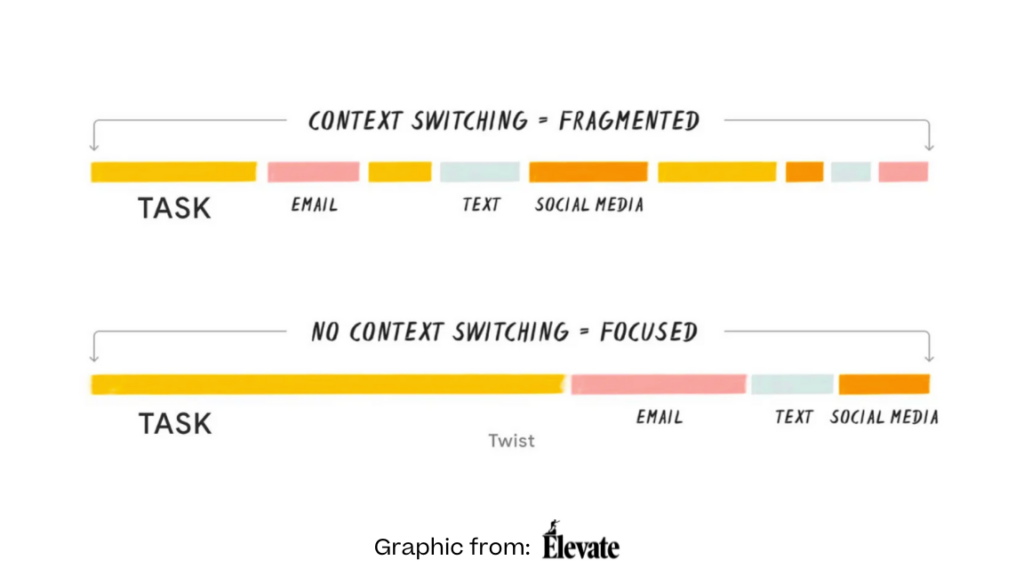
Written by Scot Chisholm
| Leadership, Management, Ops | January 26, 2024

I’ve been a founder and CEO for nearly 20 years, have been in more meetings than I’d like to admit, and have read countless books on management and leadership.
My conclusion? Most meetings are a waste of time and money.
BUT there are 3 meetings that you do need. No startup should operate without them (make sure you note this down).
Meetings are notorious time-suckers. They’re often where productivity goes to die and are one reason productivity is falling in companies worldwide (see this study if you don’t believe me). 32% of people think most meetings could have been an email, although it feels way higher in reality.
Meetings are notorious culture killers in larger corporations. Think of the movie Office Space.

But more and more, I’m seeing leaders overuse business meetings as a form of communication and decision-making. And virtual environments seem to be even worse.
Here’s why they waste so much 🕜 and 💸:
The curse of most meetings is that they lack a clear goal. People arrive with different expectations, and the meeting drifts towards the loudest voice in the room rather than what needs to be achieved.
To make matters worse, they can drag on and on without a specific agenda. This sucks up valuable time that could be spent on direct, outcome-oriented work.
But the cost here isn’t just the hours wasted in the actual meeting – it’s the interruption to the day (the before and after) that really hurts.
Research indicates that it takes 23 minutes on average to return to the original task after an interruption. For a team of 10, that’s over 3 hours of lost productivity for just one meeting – that’s context-switching for you.

Every meeting has a price tag – and it’s high. If you tally up the hourly wages of all attendees, it’s usually in the thousands of dollars per meeting. Now, consider the output of the meeting – was there a decision made that justified that expense? The answer’s usually no.
This is terrible for startups and small businesses where lean operation is key to survival.
The traditional meeting culture needs a revamp. Otherwise, you’re just bleeding away employee well-being and your bottom line.
Not all meetings are bad.
Group meetings (physical or virtual) can be extremely high-leverage if the audience and content are correct. I’ve seen these 3 meetings work wonders👇
All-hands is your most important meeting–the drumbeat and the rhythm that keep the company marching to the same tune. It’s your chance to reinforce the company’s mission and values.
But I see CEOs & founders treat the all-hands meeting like an afterthought. They come ill-prepared and get 1/100th the impact they could have. Don’t waste it!
Who:
Everyone on the team should be there (no one should miss out).
Why:
It aligns the entire team on purpose, direction, and progress (PDP).
When:
For Smaller teams (under 50 people): Monthly for 60-90 minutes. For Larger teams (over 50 people): Quarterly for 90-120 minutes.
Agenda:
Always include the following:
The goal of the all-hands meeting is to provide clarity and create positive momentum. You reiterate goals, celebrate wins, dissect losses, and broadcast the broader vision. It’s the campfire where your company culture warms and bonds.
I wrote more about crafting a killer all-hands agenda here.
I call this a ‘top-goals’ meeting to reiterate what the content should focus on. However, this meeting is equivalent to a recurring leadership or team meeting. But pay close attention to the structure and agenda – it matters a lot!
The point of the meeting is to review progress against your annual goals (have 3 MAX!). Too many leadership meetings go by without a thorough inspection of progress. Then the quarter ends, someone misses their targets, and everyone is surprised. This is not good.
Who:
Leadership team and/or key people responsible for your top 3 team or company-wide goals.
Why:
Tracks progress against your top 3 most important items
When:
Weekly (60 minutes) or bi-weekly (90 minutes)
I prefer bi-weekly with a brief Slack or email-based update during the off week.
Agenda:
Spend time on each goal. The purpose is to track:
Top Goals Meetings are your status checkers – without them, you’re navigating blind with no way to track your progress.
The most underestimated tool in a leader’s kit – the humble 1×1. A meeting with each person on your team. If you have a large team, it’s only with your direct reports.
Who:
Just you and the person
Why:
Tracks progress against individual goals and offers tailored help. They also help you to build deeper relationships or discuss more detailed feedback.
When:
Every other week. Keep it to 60 minutes.
Sometimes, I do weekly (instead of every other week), but only in two scenarios:
Agenda:
In these meetings, cover:
These are where you tune into the individual frequencies of your team. Here, you’re not the boss; you’re the coach, the mentor, the support. These meetings are where potential is nurtured and challenges are tackled head-on.
Now that you know the 3 meetings you need to really nail, let’s hit three rules to maximize their effectiveness:
Preparation isn’t just about having an agenda. It’s about having the RIGHT one. Craft it with purpose. Are you deciding, brainstorming, updating, or solving?
A meeting is a symphony, not a solo. Make sure everyone’s voice is heard, and don’t dominate the conversation.
Action is the endgame of any meeting. Meetings should always finish with a clear call to action.
Meetings should be the launchpads of action, not black holes of time. And remember to always end on a high note!
—
Meetings don’t have to be the bane of your company’s existence. With the right types and rules, they can be your powerhouse!
—
Are you a founder, executive, or manager? I’d love to support your professional growth.
Here are three ways:
Join 100,000+ leaders getting the blueprint to go from $0 to $100M.
Leadership, Management | June 28, 2024
No one likes annual performance reviews. Not the employee, not the manager, not the company. So why do so many companies still suffer the brain damage? Because, like so many things in business, “it’s the...
If you watch one thing this week, this should be it 👇 Ever feel like you’re working your ass off, but not making any real progress? It happens to the best of us. In the...
Founders, Leadership | May 17, 2024
It’s all about incentive alignment… Most companies screw up compensation design. They struggle to balance base pay, bonus pay, and sales commissions – either making things too complex (you need a PHD to understand your...
I'd love to learn more about you to better customize the tips I send, ensuring they are as relevant and helpful as possible.


Hi, I’m Scot — Join 100,000+ leaders getting
the blueprint to go from $0 to $100M.